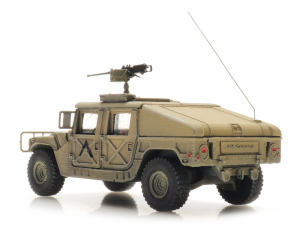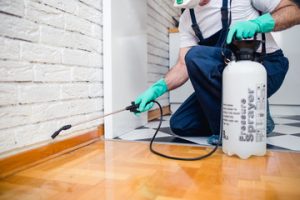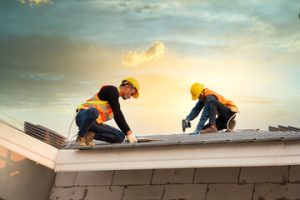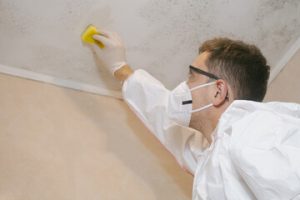Insulation Perth is material that resists the flow of heat, reducing heating and cooling costs. It also reduces noise levels and helps meet OSHA standards for workplace safety and comfort.
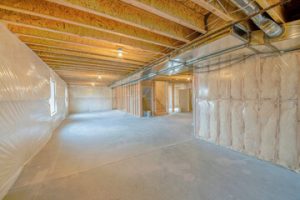
Homebuyers today are looking for energy efficient homes with good insulation. Proper insulation is a simple and affordable upgrade that is easily installable by a homeowner.
Insulation slows the transfer of heat between spaces in a home or building, making it easier for heating and cooling systems to keep indoor temperatures steady. This helps minimize energy consumption by allowing a building to stay warmer in winter and cooler in summer without the need for excessive heating and cooling. Depending on the climate, homes and buildings that are adequately insulated can save an average of 11% on their annual energy bills.
During the early stages of human civilization, prehistoric peoples used animal skins and plants to provide thermal insulation for their shelters. Later, as people developed agriculture, they began constructing stone, earth and cave dwellings to protect themselves from wild animals, harsh weather conditions and extremes of temperature.
Today, a variety of materials are available to create effective thermal insulation and reduce energy consumption and carbon emissions. Typically, insulation materials are made of nonmetallic substances filled with air pockets. The air pockets resist the flow of heat about 15,000 times better than a good metallic conductor of the same thickness. Insulation is rated according to its thermal resistance, or R-value. The higher the R-value, the more effective the material.
Most homes in the United States are under-insulated and have significant air leaks. Sealing these leaks and adding insulation is one of the most cost-effective ways to improve energy efficiency. This not only reduces energy bills, but also minimizes the amount of greenhouse gases emitted by powering your appliances and heating and cooling system.
In addition to reducing energy costs, proper insulation provides comfort and durability for the home. It maintains a consistent interior temperature throughout the year, reducing drafts and eliminating cold spots. It also helps prevent moisture infiltration, which can contribute to mold growth, rot, and other structural problems.
If you’re ready to start saving on your energy expenses, get started with Drawdown’s insulation solution. Check out our Massachusetts Mass Save rebate program for more information on a high-performance home upgrade. We also offer a free in-home energy assessment. Then contact our team to learn about your options for installing insulation and air sealing in your home or business.
Reduces Greenhouse Gas Emissions
Insulation reduces carbon footprints by reducing the use of fossil fuels such as natural gas, propane, fuel oil, and electricity to heat and cool buildings. This conserves nonrenewable energy supplies and helps to prevent air pollution. In addition, insulation reduces the amount of greenhouse gases released during the production and combustion of these fossil fuels.
Increasingly, homeowners and builders are placing more emphasis on choosing building materials that minimize environmental impact. This includes seeking out products that are recycled, responsibly sourced, and have low embodied carbon. In particular, a focus is placed on energy-efficient and eco-friendly building products like insulation that are made from natural or recycled materials.
The type of insulation used can have a significant impact on a building’s overall embodied carbon, or the amount of carbon it contains when manufactured and installed. Different insulation materials have varying levels of embodied carbon, with some types having significantly higher levels than others. For example, spray foam insulation is a popular option for new construction, but it is not sustainable and poses health risks due to the volatile organic compounds (VOCs) it releases during installation.
Cellulose, on the other hand, has a very low embodied carbon compared to other insulation types. This is because cellulose is produced using natural materials, while most competing products are manufactured from plastics. Additionally, cellulose insulation can be used with lower carbon energy sources such as solar or wind power, which further reduces its carbon footprint.
When comparing the carbon footprints of different insulation types, it is important to consider both the embodied carbon and the operational carbon emissions. The embodied carbon is the total amount of greenhouse gases that are emitted during manufacturing, including the use of blowing agents and transportation. The operational carbon emissions refer to the carbon dioxide that is emitted during heating and cooling.
The best way to determine the overall carbon performance of insulation is to calculate its carbon avoidance, or how much greenhouse gases it saves over its 75-year life span compared to its embodied carbon. The chart below compares the carbon avoidance of several different insulation types, with cellulose insulation clearly outperforming all competitors.
Increases Home Value
While many homeowners renovate their homes to make them more aesthetically pleasing, some fail to realize that updating insulation is one of the best ways to increase a property’s value. This is because potential buyers are interested in a home that is energy efficient and has low utility bills, since this translates to lower monthly energy costs. Additionally, newer insulation helps to keep a home cooler during the summer and warmer during the winter, which is more comfortable.
Insulation is also environmentally friendly as it reduces the use of natural gas, fuel oil, propane and electricity to heat and cool a house, thus lowering emissions that cause global warming. Furthermore, certain insulating materials like cellulose are made from recycled materials, which is great news for the environment as well.
A home with good insulation will reduce heating and cooling costs, improve indoor air quality, reduce noise pollution and leave behind a smaller carbon footprint, all of which are valuable selling points for your home. Additionally, as energy costs continue to rise, re-insulating your home can help to mitigate the cost increases for future owners of your home, making it a sound financial investment.
Adding or replacing old insulation is a relatively affordable project that can be done quickly, especially when compared to other home improvement projects with high return on investment. In fact, according to Remodeler Magazine’s annual “Cost vs. Value” report, upgrading your attic with fiberglass insulation is the highest returning home improvement project, recouping 117% of its initial cost in increased home value upon sale.
As more and more homeowners are becoming aware of the benefits of insulation, they are increasingly seeking this feature when buying a new home. Appraisers are also taking note of the energy efficiency features of a home, as they are seen as investments in future savings and sustainability, and can help to boost a home’s market value.
A well-insulated home is a warm, cozy home and it will stay that way all year round – even during the harsh winter weather! In addition, a well-insulated home will allow the HVAC system to work more efficiently as it won’t be working so hard to maintain your preferred temperature.
Reduces Health Issues
Insulation does more than increase energy efficiency. It is also a crucial element in controlling indoor temperature, sound and humidity levels and providing a healthier environment for people to live and work in. This can make a significant difference to the quality of life for elderly and socially disadvantaged people as well as reducing energy costs, which are often a major financial burden.
Insufficient insulation allows outdoor air pollutants like pollen, dust mites and mold to enter and accumulate in the home. These irritants can cause breathing problems, dry throats, itchy eyes and other respiratory issues. They can also impact indoor air quality (IAQ) and contribute to long-term health problems.
Poor insulation can also cause moisture accumulation and damage to structures, which is an issue because of the potential health risks it presents. Wet insulation can lead to mold and mildew growth, which can release spores into the home and spread throughout the air. This can be a serious problem for those with weak immune systems, young children and the elderly.
When wet, fiberglass insulation can also release formaldehyde into the home. This is an issue because formaldehyde has been linked to a range of health issues, including eye, nose and throat irritation and asthma symptoms. It can also trigger allergies and may even cause cancer in some cases. Insulation made of natural materials, such as cellulose, wool and cotton can avoid this issue because they don’t release any chemicals or off-gasses.
In addition, cellulose and wool insulation are made of recycled paper products, making them environmentally friendly. Wool and cellulose can also be treated with fire retardants, meaning that they are resistant to both flames and smoke. In tests, a home insulated with cellulose and treated with borate has been shown to resist fire for longer than an uninsulated home.
The type of insulation that is best for your home depends on your climate. Some insulation is better suited to cold climates, where it prevents heat from escaping, while other types are more effective in hot climates, where they block out unwanted heat.
